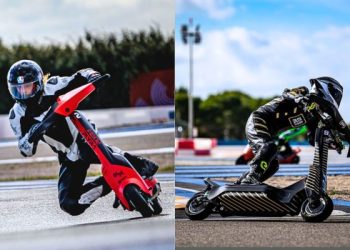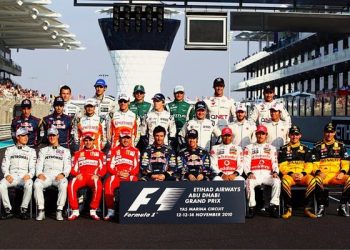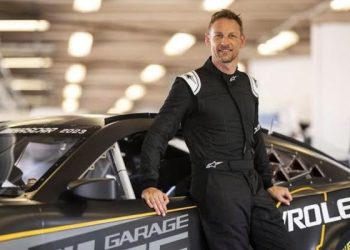During the Second World War, more than 60 battleships, including 23 from the United States alone, were used in battle. They were some of the biggest capital ships ever made, but battles between battleships were rare during the war. By the time the war was over, the big-gun battle wagon had almost reached the end of its time.
USS Iowa (BB-61)
The USS Iowa (BB-61) was the first ship of the last class of U.S. Navy battleships to be built. It was put into service in 1943. As a “fast battleship,” she was very important to the war effort. She led task forces of aircraft carriers, bombed shore positions, and even helped support invasions of enemy-held islands with artillery. The battleship also pointed its guns at industrial targets on the Japanese home islands. Later, it was in Tokyo Bay when the Japanese gave up.
She went back to work after the war, first during the Korean War and then again in the 1980s. She got a total of 11 battle stars and hosted three U.S. presidents. Because of this, she was called the “Battleship of Presidents” and the “Big Stick.”
President Franklin D. Roosevelt used the warship to get halfway to the Tehran Conference with Winston Churchill and Joseph Stalin. He said of the ship, “From all I have seen and heard, Iowa is a ‘happy ship,’ and having served in the Navy for many years, I know, and you know, what that means.”
The USS New Jersey (BB-62)
The USS New Jersey (BB-62), the second Iowa-class battleship, is also known as the “Big J” or the “Black Dragon.” It is one of the most decorated ships in the history of the U.S. Navy. She was also one of the biggest ships ever made for war.
She was made to be a flagship, and her first battle was with the Fifth Fleet, which was led by Adm. Raymond A. Spruance. During the landings on the Marshal Islands in January 1944, the 16-inch guns on BB-62 helped with the fire. After that, they were used on Saipan and Tinian. She later protected American aircraft carriers during the Battle of the Philippine Sea, where anti-aircraft fire from the USS New Jersey and other screening ships was almost impossible to get through.
In total, BB-62 got nine battle stars for its service in the Second World War. It then got four more for its service in Korea, three more for its service in the Vietnam War, and three more for its service in Lebanon and the Persian Gulf Region.
The mighty warship is now kept as the Battleship New Jersey Memorial and Museum in Camden, New Jersey, just across the river from Philadelphia.
USS Missouri (BB-63)
Even if the USS Missouri (BB-63), the fourth and final Iowa-class battleship, never fired a shot in anger, she would still be at the top of this list, because the Empire of Japan officially gave up and the Second World War ended on her deck on September 2, 1945. That 23-minute ceremony of giving up was shown all over the world.
Still, the USS Missouri got three battle stars for its service in the war. It also got five more battle stars for the Korean War, two Combat Action Ribbons, and a lot of other commendations and medals for its service in the Gulf War. She agreed with the attack on Iwo Jima and took part in the bombing of Okinawa. She was also called “Mighty Mo,” and she was the first battleship to fire Tomahawk cruise missiles at Iraqi targets when Operation Desert Storm began.
On June 22, 1998, people gather on the beach to watch the battleship USS Missouri (BB 63) sail into Pearl Harbor, Hawaii. Secretary of the Navy John H. Dalton signed the Donation Agreement on May 4. This means that the Missouri can be used as a museum near the Arizona Memorial. From Bremerton, Washington, the ship was pulled. DoD picture by U.S. Navy Petty Officer 1st Class David Weideman.
Today in history
The first electric car in Canada was made by the John Dixon Carriage Works in Toronto on December 5, 1893. It was a two-seater with padded seats and wire-spoke wheels. The vehicle was moved by turning the axle in the middle with a tiller that had a throttle on it.
The 4-bhp electric motor could move the car at 15 mph for up to an hour before the batteries needed to be charged. It also had electric lights, a folding top, and pneumatic tyres while the batteries were charged with the help of the new power grid for trains.
Ride of the day
The e-tron GT is Audi’s first all-electric sedan. The GT combines its good looks with great comfort on the road, plenty of speed, and a high-end cabin full of the latest tech features.
It’s a powerful sports car with a striking look like the Porsche Taycan. It has two motors, enable it to move on all four wheels and can make up to 522 horsepower.
If the e-tron GT were the first car of its kind, it would be a big deal, according to edmunds.com. “The EPA estimates that the e-tron GT can go 238 miles, which isn’t very far, but in our real-world test, it went 273 miles; the farthest a fully charged electric or hybrid car can go on electric power alone (EPA-estimated driving range).”
‘EPA-estimated driving range’ is the approximate number of miles that a car can go in a mix of city and highway driving (55% highway, 45% city) before it needs to be charged, according to the Environmental Protection Agency (EPA)’s testing methodology.





















